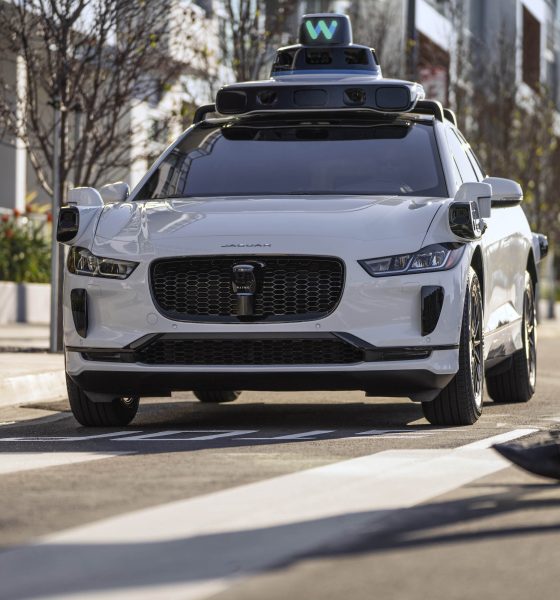Google’s driverless ride-hailing company Waymo has revealed the latest in a string of AI research-related announcements, this time sharing results from a first-of-its-kind study on collisions with vulnerable road users.
Waymo last week announced EMMA, its end-to-end, multimodal research model for autonomous driving, though it isn’t being used commercially at this point. The company also went on to detail its current approach to AI in a separate press release, noting its continued research into real-world models and AI training, a concept that may sound familiar to those who have followed Tesla’s Full Self-Driving (FSD) development.
On Monday, however, Waymo shared results from a study on Vulnerable Road Users (VRUs), in which the company reconstructed hundreds of collisions involving VRUs like pedestrians, cyclists, and motorcyclists. Waymo says that the research, as conducted in a partnership with Nexar, is the largest dataset of its kind in the U.S., providing key insights into real-world crash scenarios.
The companies analyzed dash camera footage of 335 collisions involving VRUs across six U.S. cities, leveraging over 500 million miles of driving data from Nexar for the research. The partnership also worked with Waymo research partner VUFO, which contributed to the below models on collision injury risk.
Credit: Waymo Credit: Waymo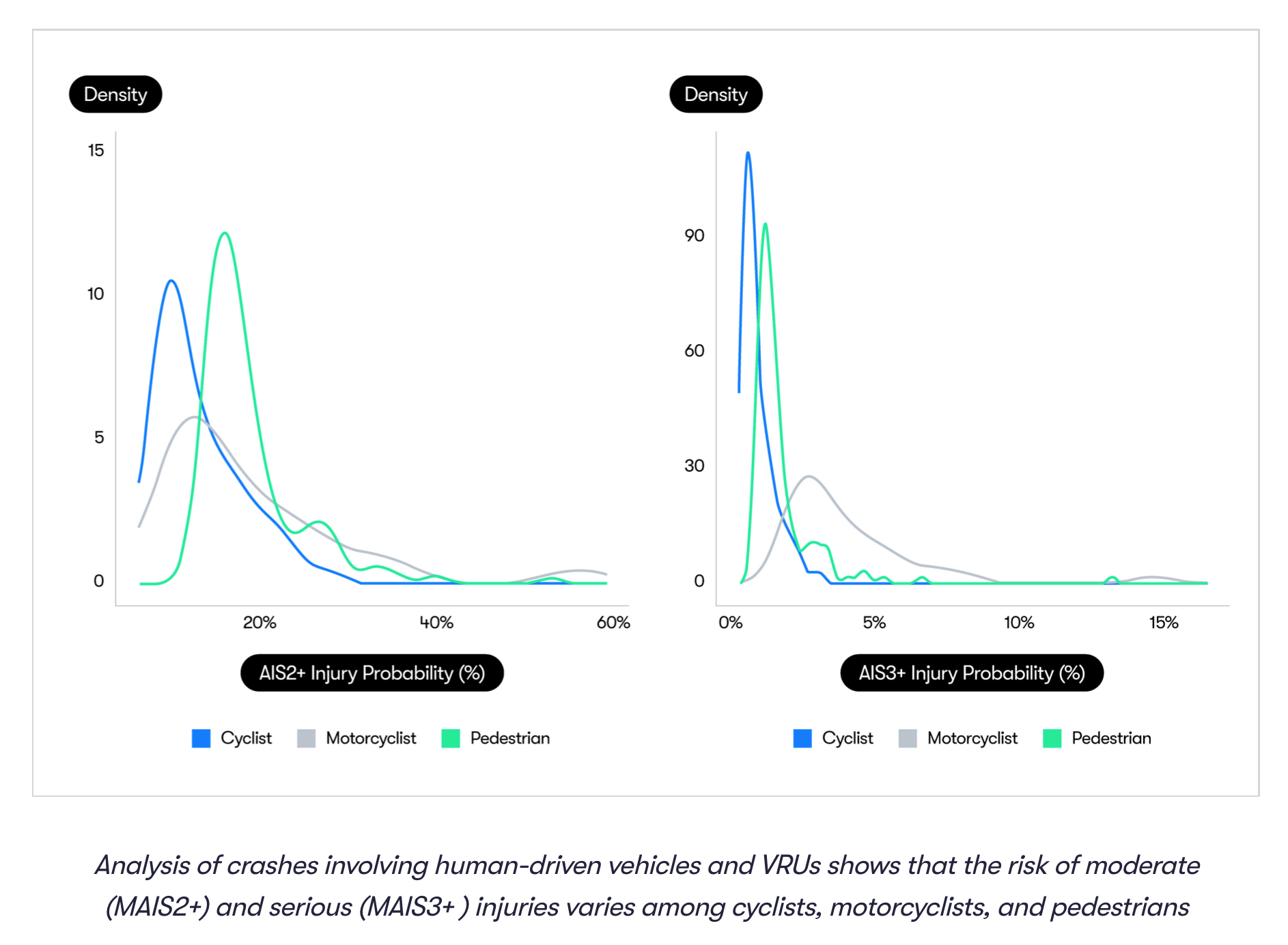
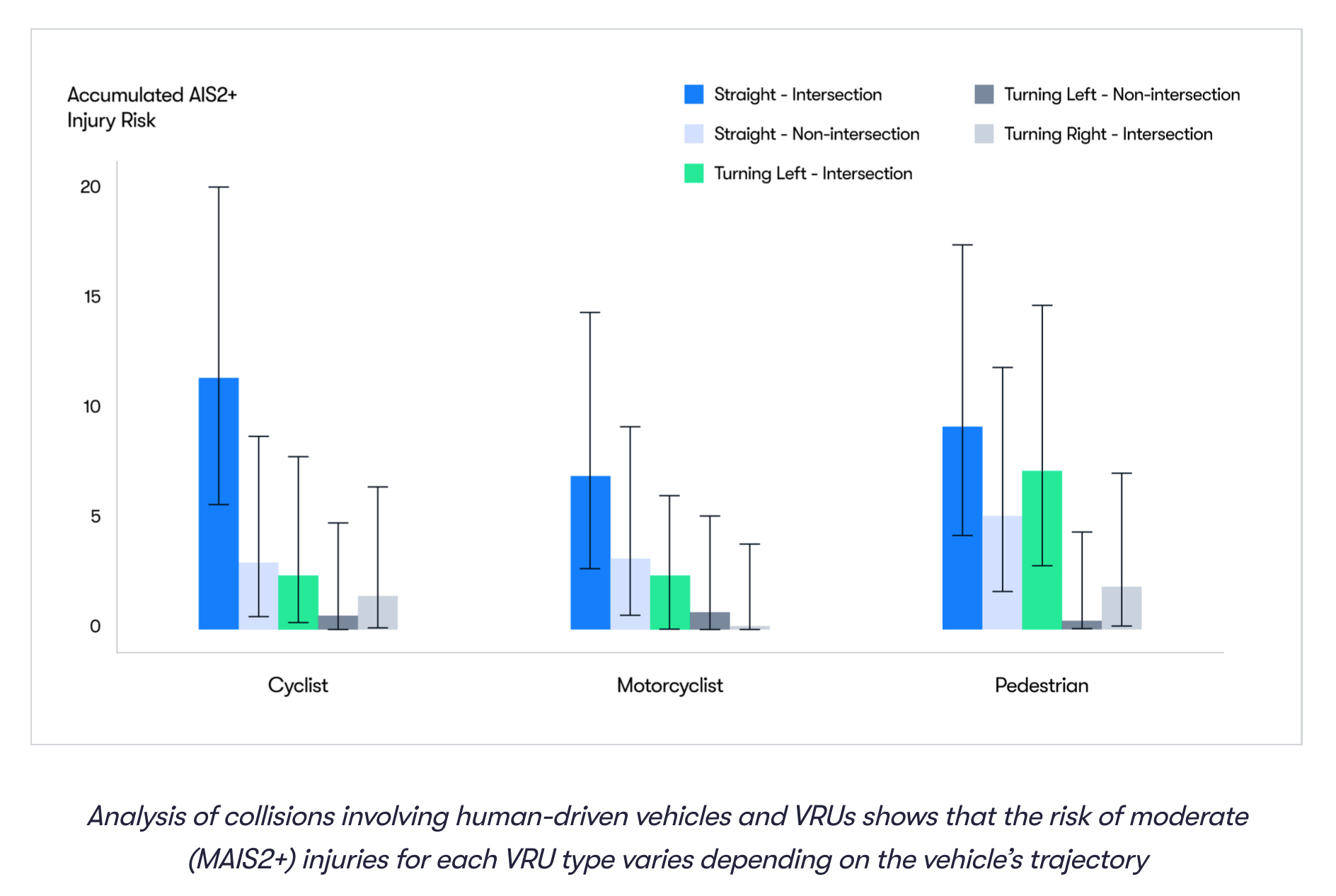
According to the National Highway Traffic Safety Administration (NHTSA), there were an estimated 7,522 pedestrians and 1,105 cyclists who lost their lives in traffic crashes in 2022, though Waymo says VRU collision data remains scarce. The company explains this by noting that several VRU-related incidents don’t get reported to authorities or insurance firms, while the U.S. and other major accident databases lack data on these particular incidents.
“We’re excited to partner with Waymo on this cutting-edge research,” said Henrik Liers, Managing Director of Waymo research partner VUFO. “Our common work addresses critical limitations in existing models and provides a more precise, interdisciplinary approach to assessing injury risk for vulnerable road users. This is a significant contribution towards improving road safety.”
Tesla’s Full Self-Driving and end-to-end learning models
The recent developments from Waymo come as General Motors’s (GM’s) Cruise, Amazon’s Zoox, and Tesla’s Supervised Full Self-Driving (FSD) aim to offer similar robotaxi services. While Tesla doesn’t currently operate a paid ride-hailing service as Waymo does, it unveiled the two-seat, steering wheel-free Cybercab robotaxi last month.
Interestingly, Tesla’s FSD system has been touted by some as a more scalable solution, in no small part due to its end-to-end system that trains on millions of clips of real-time driving footage. Another factor is that FSD is available to any Tesla owner who purchases the software, meaning that its neural network stands to have a much wider potential research base than systems like Waymo—at least until services scale up substantially.
Tesla’s Cybercab isn’t expected to go into production until 2026, though FSD Supervised will certainly collect a substantial amount of data in the meantime. As of Tesla’s Q3 earnings call, the company has over 2 billion cumulative miles of data from FSD Supervised users, after it surpassed a milestone of 1.3 billion miles in April.
Tesla FSD V13 to implement features required for unsupervised driving: exec
What are your thoughts? Let me know at zach@teslarati.com, find me on X at @zacharyvisconti, or send us tips at tips@teslarati.com.
Need accessories for your Tesla? Check out the Teslarati Marketplace:

News
Tesla dispels reports of ‘sales suspension’ in California
“This was a “consumer protection” order about the use of the term “Autopilot” in a case where not one single customer came forward to say there’s a problem.
Sales in California will continue uninterrupted.”

Tesla has dispelled reports that it is facing a thirty-day sales suspension in California after the state’s Department of Motor Vehicles (DMV) issued a penalty to the company after a judge ruled it “misled consumers about its driver-assistance technology.”
On Tuesday, Bloomberg reported that the California DMV was planning to adopt the penalty but decided to put it on ice for ninety days, giving Tesla an opportunity to “come into compliance.”
Tesla enters interesting situation with Full Self-Driving in California
Tesla responded to the report on Tuesday evening, after it came out, stating that this was a “consumer protection” order that was brought up over its use of the term “Autopilot.”
The company said “not one single customer came forward to say there’s a problem,” yet a judge and the DMV determined it was, so they want to apply the penalty if Tesla doesn’t oblige.
However, Tesla said that its sales operations in California “will continue uninterrupted.”
It confirmed this in an X post on Tuesday night:
This was a “consumer protection” order about the use of the term “Autopilot” in a case where not one single customer came forward to say there’s a problem.
Sales in California will continue uninterrupted.
— Tesla North America (@tesla_na) December 17, 2025
The report and the decision by the DMV and Judge involved sparked outrage from the Tesla community, who stated that it should do its best to get out of California.
One X post said California “didn’t deserve” what Tesla had done for it in terms of employment, engineering, and innovation.
Tesla has used Autopilot and Full Self-Driving for years, but it did add the term “(Supervised)” to the end of the FSD suite earlier this year, potentially aiming to protect itself from instances like this one.
This is the first primary dispute over the terminology of Full Self-Driving, but it has undergone some scrutiny at the federal level, as some government officials have claimed the suite has “deceptive” naming. Previous Transportation Secretary Pete Buttigieg was vocally critical of the use of the name “Full Self-Driving,” as well as “Autopilot.”
News
New EV tax credit rule could impact many EV buyers
We confirmed with a Tesla Sales Advisor that any current orders that have the $7,500 tax credit applied to them must be completed by December 31, meaning delivery must take place by that date. However, it is unclear at this point whether someone could still claim the credit when filing their tax returns for 2025 as long as the order reflects an order date before September 30.
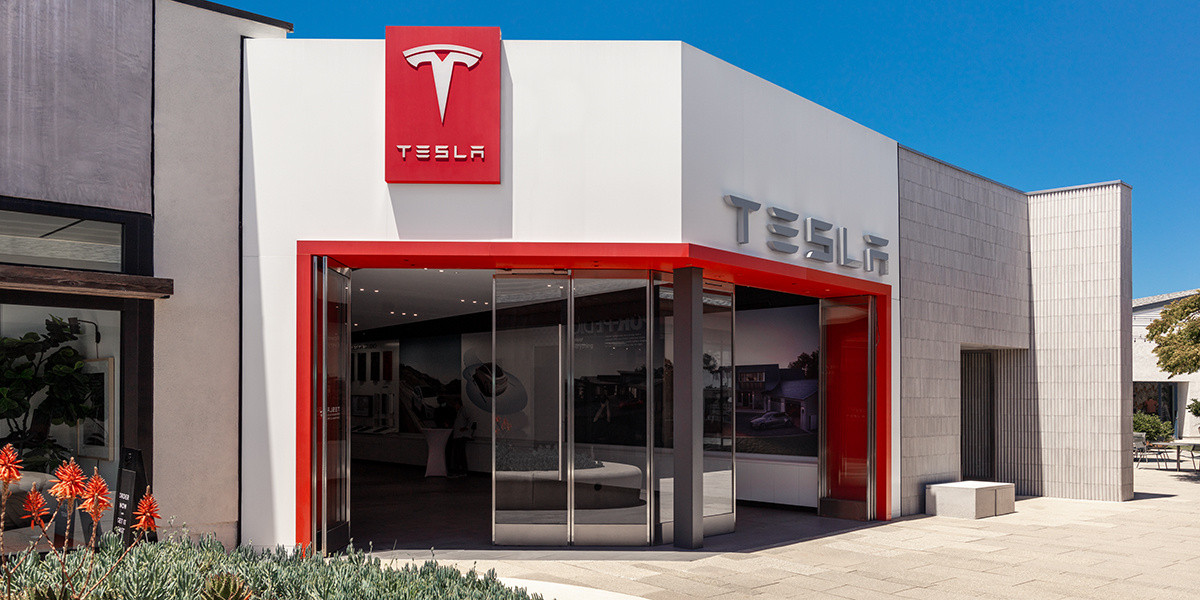
Tesla owners could be impacted by a new EV tax credit rule, which seems to be a new hoop to jump through for those who benefited from the “extension,” which allowed orderers to take delivery after the loss of the $7,500 discount.
After the Trump Administration initiated the phase-out of the $7,500 EV tax credit, many were happy to see the rules had been changed slightly, as deliveries could occur after the September 30 cutoff as long as orders were placed before the end of that month.
However, there appears to be a new threshold that EV buyers will have to go through, and it will impact their ability to get the credit, at least at the Point of Sale, for now.
Delivery must be completed by the end of the year, and buyers must take possession of the car by December 31, 2025, or they will lose the tax credit. The U.S. government will be closing the tax credit portal, which allows people to claim the credit at the Point of Sale.
🚨UPDATE: $7,500 Tax Credit Portal “Closes By End of Year”.
This is bad news for pending Tesla buyers (MYP) looking to lock in the $7,500 Tax Credit.
“it looks like the portal closes by end of the year so there be no way for us to guarantee the funds however, we will try our… pic.twitter.com/LnWiaXL30k
— DennisCW | wen my L (@DennisCW_) December 15, 2025
We confirmed with a Tesla Sales Advisor that any current orders that have the $7,500 tax credit applied to them must be completed by December 31, meaning delivery must take place by that date.
However, it is unclear at this point whether someone could still claim the credit when filing their tax returns for 2025 as long as the order reflects an order date before September 30.
If not, the order can still go through, but the buyer will not be able to claim the tax credit, meaning they will pay full price for the vehicle.
This puts some buyers in a strange limbo, especially if they placed an order for the Model Y Performance. Some deliveries have already taken place, and some are scheduled before the end of the month, but many others are not expecting deliveries until January.
Elon Musk
Elon Musk takes latest barb at Bill Gates over Tesla short position
Bill Gates placed a massive short bet against Tesla of ~1% of our total shares, which might have cost him over $10B by now
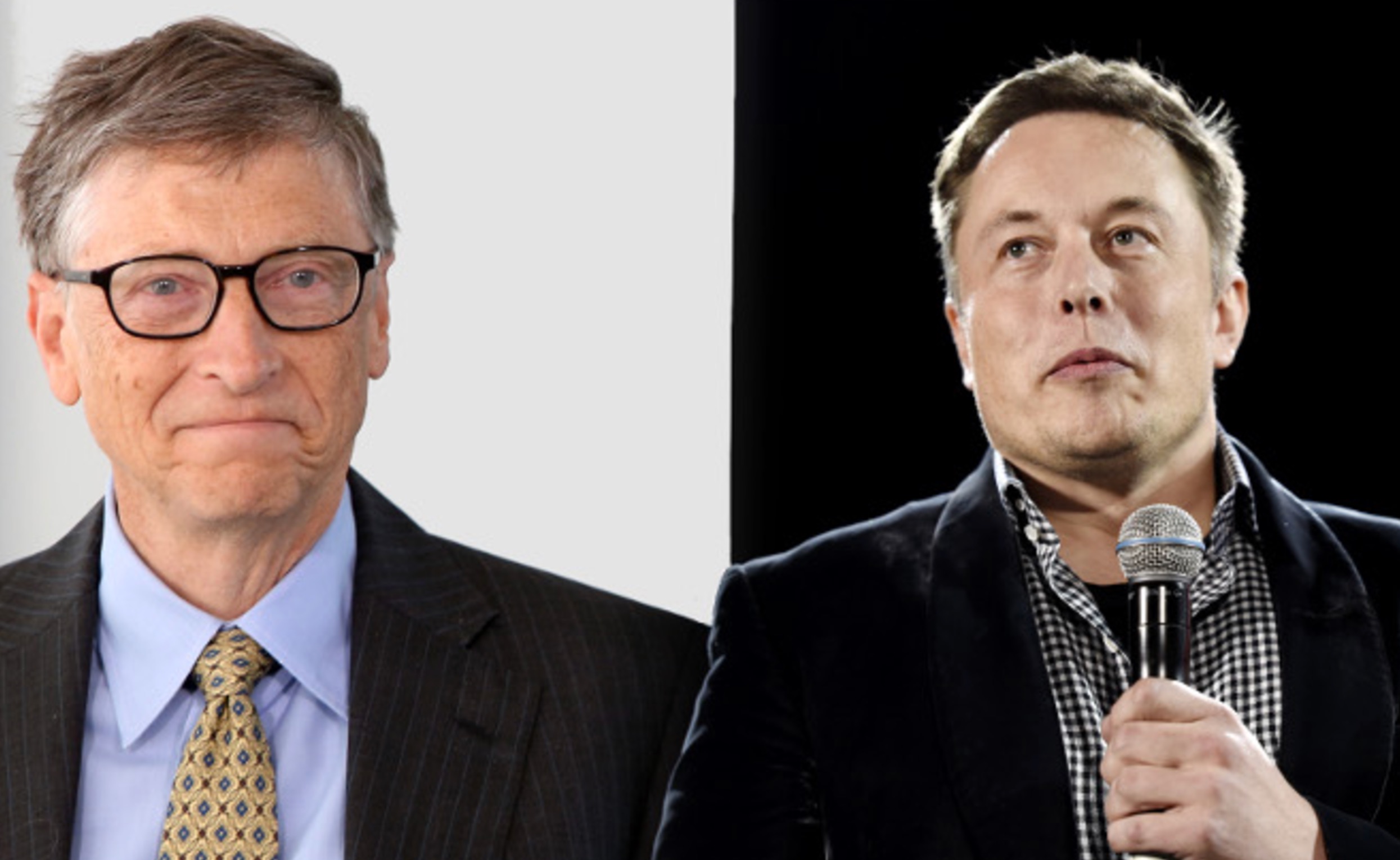
Elon Musk took his latest barb at former Microsoft CEO Bill Gates over his short position against the company, which the two have had some tensions over for a number of years.
Gates admitted to Musk several years ago through a text message that he still held a short position against his sustainable car and energy company. Ironically, Gates had contacted Musk to explore philanthropic opportunities.
Elon Musk explains Bill Gates beef: He ‘placed a massive bet on Tesla dying’
Musk said he could not take the request seriously, especially as Gates was hoping to make money on the downfall of the one company taking EVs seriously.
The Tesla frontman has continued to take shots at Gates over the years from time to time, but the latest comment came as Musk’s net worth swelled to over $600 billion. He became the first person ever to reach that threshold earlier this week, when Tesla shares increased due to Robotaxi testing without any occupants.
Musk refreshed everyone’s memory with the recent post, stating that if Gates still has his short position against Tesla, he would have lost over $10 billion by now:
Bill Gates placed a massive short bet against Tesla of ~1% of our total shares, which might have cost him over $10B by now
— Elon Musk (@elonmusk) December 17, 2025
Just a month ago, in mid-November, Musk issued his final warning to Gates over the short position, speculating whether the former Microsoft frontman had still held the bet against Tesla.
“If Gates hasn’t fully closed out the crazy short position he has held against Tesla for ~8 years, he had better do so soon,” Musk said. This came in response to The Gates Foundation dumping 65 percent of its Microsoft position.
Tesla CEO Elon Musk sends final warning to Bill Gates over short position
Musk’s involvement in the U.S. government also drew criticism from Gates, as he said that the reductions proposed by DOGE against U.S.A.I.D. were “stunning” and could cause “millions of additional deaths of kids.”
“Gates is a huge liar,” Musk responded.
It is not known whether Gates still holds his Tesla short position.

